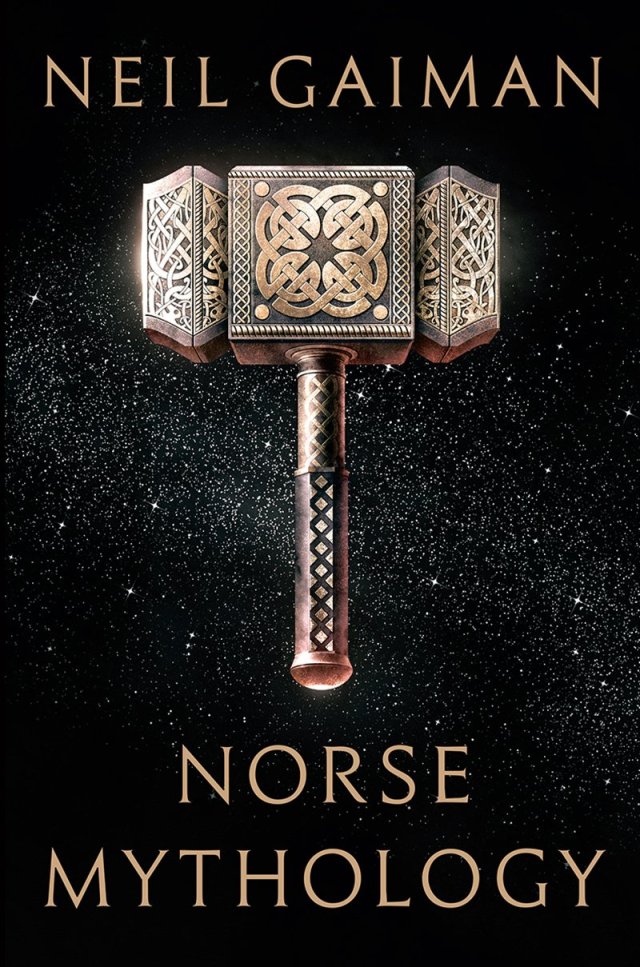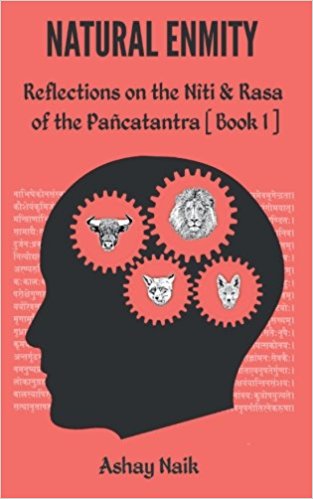A ship sinks in the ocean. A boy survives the shipwreck and manages to safely reach the Mexican shore. When he’s found by the locals on the shore, he’s all alone, next to a small boat. Everyone is curious to know how did he manage to survive for that long (the book says 227 days). Chuck Noland (the character played by Tom Hanks in Cast Away) was also a survivor, but he waited on the land till he could find enough material to construct a raft before he entered the sea, sailing on that raft of hope. Hemingway’s old man might have survived the fight with the marlin in the the sea, but he was a fisherman who knew the waters as well as Shah Rukh Khan knows to spread his arms apart while professing love. But in our story, the boy Pi had neither the comfort of the shore, nor was he an expert sailor. And yet he survives.
A curious writer comes to Canada to meet a grown up Pi (played with elan by Irrfan Khan, who has emerged as default choice for Hollywood for playing characters of Indian origin) on the advice of Pi’s swimming teacher who promises the writer that Pi’s story will make him believe in God. Pi (short for Piscene Molitor Patel, named after a french swimming pool) makes no such promises, but narrates the story nevertheless.
The audience gets to see his younger days in Pondicherry amidst a strict, rationalist (and an atheist, but that goes without saying) father who’s a Zoo keeper and a botanist mother who is very religious. He describes his encounters with the three religions Hinduism, Christianity and Islam and how he manages to reconcile them and bring them under the umbrella of his belief. He narrates his encounter with the ferocious Richard Parker, the royal bengal tiger in his father’s zoo. Change in the town’s priorities forces his father to make a move to Canada with all their animals. While they are in the ocean on a Japanese cargo ship carrying the animals, a storm breaks out and the ship drowns along with most of its inmates. Pi survives in a small boat. The next day he realizes that he’s not alone on the boat. He tells the writer that along with him, there was a zebra which had broken it’s leg, an Orangutan which floated on a bunch of bananas before climbing the boat, and there was a hyena. What happens next, is anybody’s guess. The hyena first attacks the injured Zebra and kills it. Next, it comes for the Orangutan. The Orangutan fights back first, but the hyena’s next attack proves fatal. Pi, could do little to save either of them since he was busy saving himself by hanging on to the stern of the boat. And then, in one of the best 3D-scenes I have seen so far, we see a tiger jump out from the part of the boat that was covered by a tarp onto the hyena to make short work of it. And after this, the two unlikely companions fight it out to survive in the middle of the ocean. Pi has to learn to show Richard Parker, the tiger that he is the boss around while also rationing his supply of biscuits and fresh water and writing his story to keep his mind occupied. The remainder of the film for most part focusses on this power struggle between the Pi and the tiger and how Pi finally manages to subdue the tiger. They weather a storm, a mysterious carnivorous island before they reach the Mexican shore. Once there, Pi falls flat on the sand exhausted, but Richard parker leaps forward and enters the Mexican jungle. What disappoints Pi, and even breaks his heart was the fact that Richard Parker didn’t even look back (No Nana Patekar to say “palat”!). There were no formal goodbyes exchanged, no tears shed, not moment paused to mark the end of their momentous journey. That, he say, left a void in his heart.
The Japanese shipping company which owned that unlucky ship wanted to know the cause for the shipwreck. When Pi narrates his story to the officials from the shipping company, they do not believe in it since there were elements in the story which were implausible. They ask him for a story that was more plausible. So Pi tells them another story: The one where he survived the shipwreck along with 3 other people. A sailor who had injured his leg, his own mother and the cook from the ship. He said that the cook was a savage who killed the injured sailor in the pretext of easing his pain. He used the meat from the dead sailor’s body to catch the fish. Then one day, he tried attacking Pi’s mother. She fought off the attack, but he came back and killed her. There was nothing Pi could do to save her. He brooded over her death. He was afraid for his own life. And then, he couldn’t control himself any longer. He killed the cook. He hated the cook, not because he was such a cruel man, but he brought out the cruelty in Pi which forced him to commit murder.
Thus, those Japanese officials, the writer and the audience have now been told two stories, neither of which can be verified, since there’s no other witness. We have to rely on our narrator who, we know may not be reliable. But both of stories provide an explanation for the time between the event when Pi survived the shipwreck and the event when he landed on the Mexican shore. Hence, it was up to these people to make up their minds and decide for themselves which story they chose to believe in. When Pi asks the writer which story would he believe in, the writer picks the story with the tiger since that’s a better story. We see that even officials from the shipping company mention the the story with the tiger in their report. Pi just smiles and introduces the writer to his family and the credits begin to roll.
The film is a visual treat. The effects that you get to see as a part of Pi’s survival in the ocean are so much larger than life. In fact some of them border on realm of surrealism. Suraj Sharma does a fine job as the young Pi. The tiger which was digitally created is ferocious, but at the same time there are moments when you empathize with the beast. However, if the director intended to stay true to the premise of the book which was to make you believe in God, I have to say that he failed. The final question which Pi asks the writer after narrating two stories is also a question that’s posed to us, the audience. Which story would we believe in ? The one with elements of fantasy, hope, courage, or the other which showcases human brutality in the face of hardship? The first one didn’t give us any chance to create a mental picture of what happened since the director did the job for us. The second one, we had a chance to do so. But in the case of the writer and those officials, they had to imagine both the events themselves based on Pi’s narration before they could make a choice. The writer in the movie might have chosen to believe in the first one because Pi’s survival for 227 days was an extraordinary feat and the writer might have wanted to associate the best aspects of humanity with this survival incident, instead of it’s worst face. However, when we are posed with the same question, the answer has been rigged for us by the director. There is no way we can answer this in a fair manner. For me, the scene were Pi asks the writer which story he believes in was the weakest scene in the whole movie since I felt detached when this scene played onscreen. This scene fell flat when it was supposed to be the scene which would make the audience think.
When I finished reading the book back in 2007, the thing that moved me was the thought that the tiger could be interpreted as the animal spirit which is present in each of us which emerges in the face of hardships. In the context of Pi’s survival, the animal spirt was very much required, but if it was not tamed, if it was not controlled, it could also wreak havoc on his personality. What if Pi did survive, but lost his innocence in the process, would he be the same person who survived the shipwreck ? Hence the greatness of the story is not that a boy survived, but that he survived while keeping the best part of him intact – his human aspects. His struggle with the tiger was his struggle with his own irrational animal spirit. That he succeeded to bring about a reconciliation between these two aspects of his personality is no accident, since even as a kid, he managed to successfully reconcile and incorporate aspects from three different religions into his belief system. Once they reached the shore, the animal spirit went back into the jungle (from whence it came) since it was no longer required. Pi felt disappointed since the spirit never looked back, and he could not say a formal goodbye. Perhaps not saying goodbye made Pi uncomfortable since it meant that the animal spirit could return anytime. What if his victory over it was just temporary? Thus there was lot of room for doubt, which as he says, keeps faith alive. When the officials chooses the story with the tiger over the other story, Pi says “and so it goes with God”. Because the stories involving God or the supernatural may not be plausible and there might be more realistic explanations. But are they as interesting? When no story can satisfactorily explain the reasons for our troubles, just like how neither of two stories could explain what caused the shipwreck, why not believe in the more interesting one? This is what those officials from the Japanese shipping company did.
The reason why the book works so well is that it gives us ample opportunity to ponder on the things that were hinted at but were left unsaid. These things were lot more fascinating than the details that were narrated. However, in the movie, we are so enamoured by the visual aspects that we miss out on these hinted at, but unsaid things. When the credits roll, the image that remains with us is that of the great blue whale diving out from the ocean floor that’s beautifully lit up by the bioluminescent aquatic life. And it is as if the director hopes that this beautiful spectacle reminds us and makes us believe in the glory of God.




